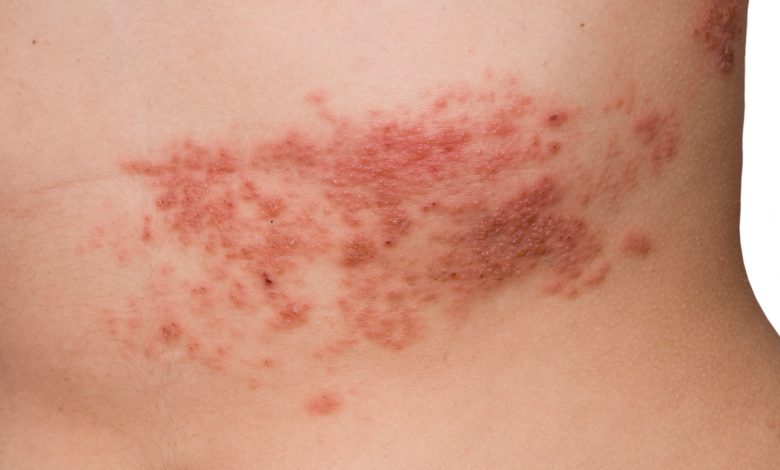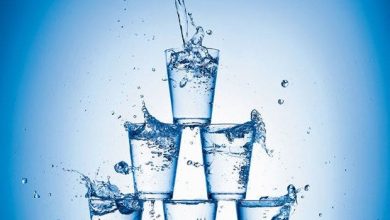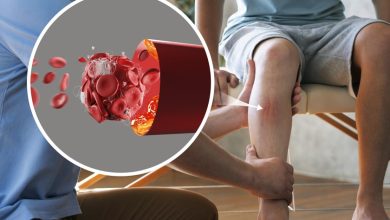
Introduction
Shingles is a disease that affects the nerves and causes both pain and a rash. Backaches, on the other hand, are common and have many different causes which can range from muscle and joint problems to diseases of the spine. Although there are many differences between the two conditions, four-fifths of people suffer from backache at some time in their lives. In contrast, shingles is rare in younger people. The average age of someone with the disease is around 60 years old. However, anyone who has ever had chickenpox can suffer from shingles. Discover effective lower back pain period relief solutions to help you feel more comfortable during your cycle.
Few people with backache will need testing or will have serious disease, but shingles sufferers will need medical treatment. Shingles can be particularly painful and distressing, with serious complications, especially in elderly or frail people. Early treatment of shingles will reduce its impact on your life and further prevent complications. Walking past someone with backache is not a hazard. Shingles sufferers, however, can be a source of infection, in particular for pregnant women and people with low resistance, for instance cancer patients.
Understanding Shingles
Understand the connection between shingles and lower back pain, and explore treatments to alleviate your discomfort. Shingles, a recurrent form of chicken pox, results from the reactivation of the varicella zoster virus (VZV), which often remains dormant for a lifetime in the cells of the peripheral nerves. Even in its most common form, herpes zoster ophthalmicus, it may involve only the cutaneous side of the eyelids or other ocular adnexa. The usual presenting symptoms are pain followed by vesicles on an erythematous base, sometimes organized in a linear fashion—the classic shingles or zoster vesicles. In general, relatively few blisters develop. The distribution is confined to areas adjacent to branches of the cranial and spinal nerves that contain the varicella zoster virus. You cannot “catch” shingles. However, if you have not previously had chicken pox, you may catch this disease from someone with shingles. If you take care of a person with chicken pox or shingles, be sure to wash your hands often.
Causes and Symptoms
Learn how to manage lower back pain after standing too long with our expert tips and exercises. Shingles is recurrent in nature, but you will not necessarily have bouts of the disease. The risk of getting shingles increases as you get older, with about 1 in 3 people developing it at some time during their life. It is rare to have shingles more than once or twice; it can occur but does not frequently recur like an attack of flu. Backache can be recurrent, and attacks of pain or stiffness are often described by the sufferer. These are, in general terms, the primary differences in recognizing the two conditions. The symptoms of shingles are not all specifically felt in the area of the shingles rash, which many people may be surprised to realize and, therefore, be unable to relate. It is the early symptoms of shingles that most regularly confuse and are frequently mistaken for backache or some other acute problem that will not develop into shingles in a couple of days, by which time the root cause of the symptoms is forgotten.
Even experienced shingles sufferers can experience all these symptoms and, in doing so, get caught out by not taking antiviral medicine within the short timeframe to avoid the full eruption of the rash, which always accompanies this viral infection. This is probably the most widespread undiscovered fact about shingles, and it can be the most dangerous situation, especially if dealing with any deadly diseases at that particular time. The usual symptoms of shingles are pain, itching, or tingling and, usually a couple of days later, a blistering shingles rash appears in a specific area of the skin. Although these are the main external knocks, many other different feelings are experienced. For the majority of shingles sufferers, the questions they ask themselves when these symptoms arise are “What did I move the wrong way?”, “Why is my back or this part of my body so painful?” or “What did I lift incorrectly?”.
Diagnosis and Treatment
Both shingles and backache may result in general malaise and fever, so the main symptom in the early stages of shingles is the sharp pain and neuralgia manifested by shingles, and is often a commensurate pain. Because of this, shingles is often misdiagnosed as neuralgia and ostealgia, and when a painful rash occurs, the patient sees a dermatologist, and the diagnosis is often delayed for a few days or even a week or so. Although backache also often begins with local pain, inflammation of the large joints of the pelvis causes pain to be felt in the lumbar region or inferior gluteus through nerve reflex. Because of this, patients with backache also often have sciatic pain, and the urogenital bowel symptoms are frequently reported. After patients with ostealgia suffer from sciatic pain, they see a rheumatologist and are diagnosed as low back pain. After patients with sciatica or urogenital bowel symptoms are diagnosed, an orthopedic surgeon is seen to receive lumbar MRI. Furthermore, shingles and backache have different onset ages, excluding the phenomenological difference of body parts. Backache occurs mostly in those who are middle-aged or older. The onset age is about 10 years after that of the ostealgia, and PRL levels being stronger in women can also be explanatory values of open-life and bone loss. Women with shingles have a higher prevalence of acute skin rashes. After backache occurs in patients over 50 years of age, the prevalence of thigh pain increases. Since most health management and some bone drug treatments are also based on the treatment age of 60 years, thus ostealgia may also generate many adverse medical behaviors.
Backache: Causes and Symptoms
It is crucial to be aware and understand the cause of the backache, as well as the signs and symptoms. It can be a very debilitating and trying condition.
Muscle Strain – This is the most common cause of backache. Lifting improperly, poor posture, and overuse of the back muscles lead to soreness and pain in the back.
Degenerative Disc Disease – This occurs with aging due to the drying out and shrinking of the intervertebral disc, which leads to backache. This condition is often associated with other signs and symptoms of aging all over the body but particularly serious in the back.
Disc Herniation – A disc injury is very common in individuals between the ages of 30 and 40. Herniation of the disc materials happens as a result of changes in the spine, which crack the external walls of the disc. This can bulge and press on a nearby spinal nerve, causing severe pain in the back.
Spondylolisthesis – A condition where one vertebra in the spine is out of line and is at the top of or below the vertebra where it would line up. It is a condition which is very detrimental to the health of the straight spine.
Lifestyle – Obesity and weak back muscles from sitting around and not exercising increase the chance of having back pain.
Osteoarthritis – A disease predominantly affecting older people. It forms when the protective cartilage, which cushions the ends of the bones, starts to wear down, which can produce backache.
Slipped Disc – The vertebral disc forces its way through gaps in the child’s bone and moves into the spinal cord and the nerve roots, causing backache.
Knee Conditions and Treatment at The Orthopaedic and Pain Practice
When it comes to a knee injury, those suffering from it may sometimes neglect it, dismissing it as just “pain” or “discomfort.” However, it is important to seek treatment early for both pain and discomfort. At The Orthopaedic and Pain Practice, we offer comprehensive treatment without further delay. Listed below are the common knee procedures that you can expect to find at The Orthopaedic and Pain Practice.
– The Osteotomy of the Knee
– The Arthroscopic Meniscal Surgery and Meniscal Transplantation
– The Replacement of the Knee
This is just a comprehensive summary of some of the knee services offered at our clinic. You might ask what do all of these procedures mean, and for what specific purpose are they performed? A treatment approach is designed and applied to the patient according to the degree of severity, your lifestyle and also your specific need based on his orthopaedic assessment. At The Orthopaedic and Pain Practice, the objective is not only to alleviate our patients’ symptoms, but to give our patients ability to return to their activities.
Consulting a Knee Pain Doctor in Singapore
Your leg consists of the femur (thigh bone), the tibia, and the fibula. The three of them are held together by the knee joint. The patella is a small bone. Due to the complexity of the knee joint, many people suffer from knee pain for various reasons, such as injury, sitting posture, and degeneration. Although most people can consult a healthcare provider without a referral from a medical practitioner, it is best to consult a knee pain doctor or sports medicine doctor in Singapore. Knee specialists can quickly diagnose problems and help you recover from knee pain as soon as possible.
There are many good family and general practitioners in Singapore who can treat knee problems. However, there are considerable advantages to seeking a “medical diagnosis” when it comes to specialist knee pain, especially when surgery is required. With proper care and guidance, most knee problems can be corrected and healed. At this time, having the right doctor can make a big difference in the speed and quality of crisis treatment. Failure to choose the right doctor can result in misdiagnosis, inappropriate treatment, inadequate correction, and symptoms recurring after remission. When participating in more strenuous activities, patients should undergo special tests, surgical procedures, and physical therapy guided by a specialized knee surgeon.
Conclusion
Understanding the differences and similarities between the symptoms of these two causes of pain, fresh joint shingles and lower back aches, is particularly important. The lines between the two are blurry and medicine can quickly fix a misdiagnosis. It is important to know the risk factors for the development of shingles, including age, immune response disorders, and the presence of malignant tumors, etc., and to aid in preventing the disease or increasing the availability of rapid treatment if it still gets sick. There are many treatments available for back pain, including self-management, physical therapy, medication, acupuncture, and behavior modification programs. Doc and the doctor must choose the best treatment for their patients based on the cause and frequency of pain, pain severity, the patient’s physical status, and the specific nature of the work or occupation from which the symptoms originate. If you have shingles, seek care from a medical professional as soon as you see a rash. Treatment of her sore can hinder complications and reduce the appearance of permanent nerve pain from post-treatment neuralgia.




